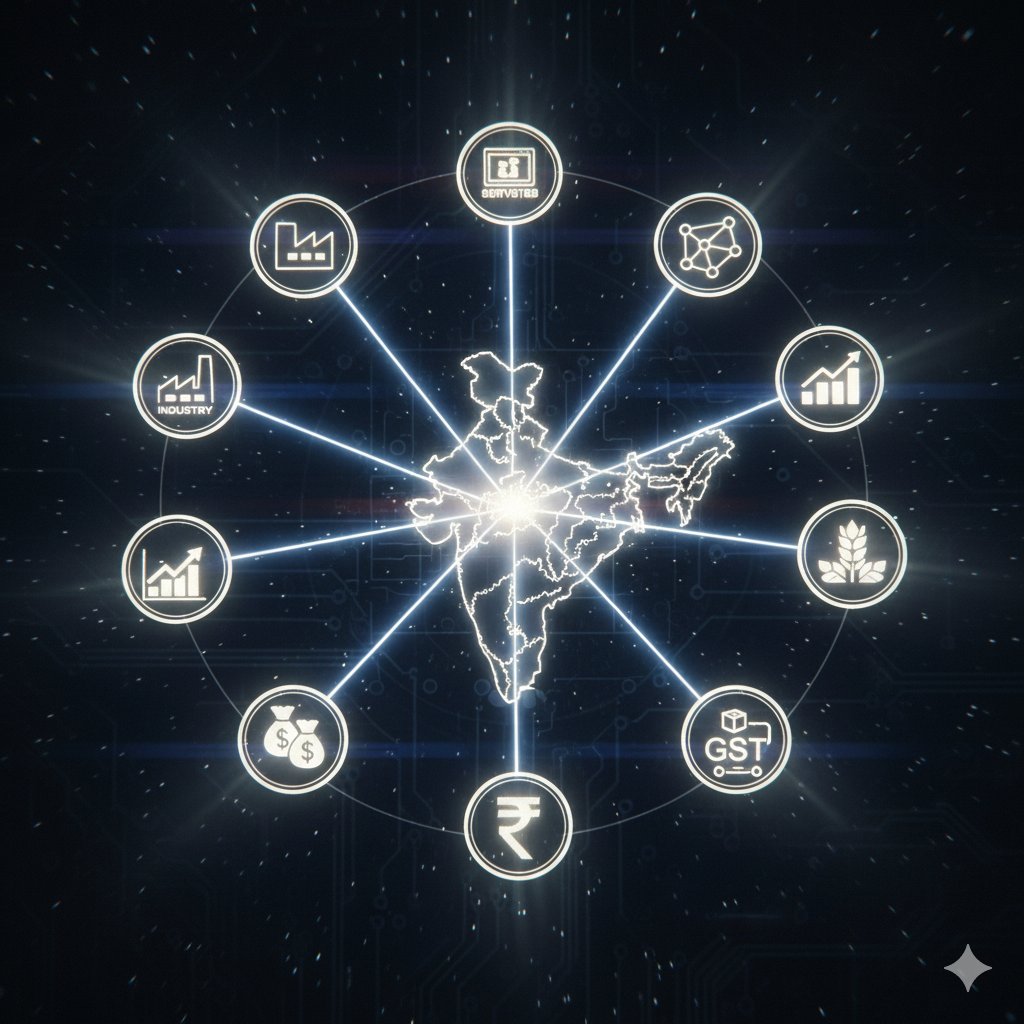Introduction
Revenue generation is the backbone of government functioning, enabling it to finance developmental activities, welfare schemes, defense, infrastructure, and administrative operations. The Indian Constitution provides a clear framework for revenue collection, ensuring financial autonomy for both the Union (Central) Government and State Governments.
Revenue in India is broadly classified into tax revenue and non-tax revenue, with additional sources arising from borrowing and other receipts. Understanding the sources of revenue is crucial to comprehending India’s fiscal federalism, budgetary management, and public finance.
This article explores the sources of revenue, their classification, Union and State sources, importance, challenges, and examples in detail for educational purposes.
1. Meaning of Revenue
In public finance, revenue refers to all the funds received by the government to meet its expenditures, excluding borrowings. Revenue can be recurrent or capital, but in this context, we focus on revenue receipts used to finance government operations.
Key Features of Revenue
- Regular Flow – Revenue is collected periodically, unlike capital receipts.
- Non-Repayable – Unlike loans, revenue is not expected to be repaid.
- Legal Authority – Collected under laws or statutory provisions.
- Used for Expenditure – Primarily for running government operations and developmental projects.
2. Classification of Revenue
Government revenue can be classified into two main categories:
A. Tax Revenue
Revenue collected through compulsory levies imposed by the government. Tax revenue is further divided based on the level of government:
- Union Tax Revenue – Levied by the Central Government.
- State Tax Revenue – Levied by State Governments.
B. Non-Tax Revenue
Revenue earned by the government through fees, fines, dividends, interest receipts, and grants, without imposing taxes. Non-tax revenue is collected by both Union and State governments depending on the nature of services and resources.
3. Sources of Revenue in India
Sources of revenue can be broadly categorized as:
- Tax Revenue
- Non-Tax Revenue
- Borrowings and Loans – Not strictly revenue but included in capital receipts.
- Grants and Aid – Funds received from foreign governments or institutions.
Let us focus on Union and State revenue sources, as outlined by the Constitution of India (Seventh Schedule).
4. Union (Central) Government Sources of Revenue
The Union Government is responsible for collecting revenue on items listed in Union List (Article 246, Schedule VII) of the Indian Constitution. The Union has exclusive authority over these items.
A. Tax Revenue of the Union Government
The Union Government primarily earns from direct and indirect taxes:
1. Direct Taxes
- Income Tax – Collected from individuals, companies, and firms.
- Corporate Tax – Levied on profits of domestic and foreign companies.
- Capital Gains Tax – Tax on gains from asset sales.
- Securities Transaction Tax (STT) – Tax on stock market transactions (recently rationalized).
2. Indirect Taxes
- Customs Duty – Tax on import and export of goods.
- Excise Duty – Levied on the production of goods (now largely subsumed under GST).
- Service Tax – Previously levied on services (also integrated into GST).
Note: After the implementation of Goods and Services Tax (GST) in 2017, many indirect taxes are now shared between Union and States under the CGST, SGST, and IGST framework.
B. Non-Tax Revenue of the Union Government
The Union Government earns non-tax revenue through:
- Administrative Fees and Charges – Passport fees, visa fees, and registration fees.
- Interest Receipts – Loans and advances given to State Governments, PSUs, and international institutions.
- Dividends and Profits – From public sector undertakings (PSUs) like ONGC, Coal India, and Indian Railways.
- Royalties and Rents – From the extraction of minerals, oil, and other natural resources.
- Fines and Penalties – From violations of legal statutes or customs rules.
- Grants and Foreign Aid – Assistance from foreign governments or international bodies for development projects.
C. Borrowings and Other Sources
Though technically capital receipts, borrowings contribute to Union resources:
- Borrowings from the Reserve Bank of India (RBI) or market through government securities.
- Loans and advances from international financial institutions.
5. State Government Sources of Revenue
State Governments derive revenue from items listed in the State List (Article 246, Schedule VII). They also receive shared taxes and grants from the Union Government as per the Finance Commission recommendations.
A. Tax Revenue of State Governments
- State Goods and Services Tax (SGST) – Share of GST on goods and services within the state.
- Land Revenue – Tax on land ownership, agricultural land, and urban land.
- Stamp Duty and Registration Fees – Charged during property transactions.
- State Excise Duty – Taxes on alcohol, liquor, and certain local products.
- Taxes on Vehicles – Road tax, tolls, and permits.
- Professional Tax – Tax on employment or professions (up to a prescribed limit).
B. Non-Tax Revenue of State Governments
- Administrative Fees – Charges for certificates, licenses, and permits issued by state departments.
- Dividends and Profits – From state-owned enterprises and corporations.
- Royalties and Rents – Revenue from minerals, forests, and water resources within the state.
- Interest Receipts – On loans given to local bodies, cooperative societies, and PSUs.
- Fines and Penalties – From traffic violations, environmental breaches, and other statutory offences.
C. Grants and Transfers from Union Government
- Finance Commission Grants – Recommended every five years to maintain fiscal balance.
- Plan Grants – For development and welfare schemes.
- Revenue Deficit Grants – To bridge the gap between revenue and expenditure.
6. Union-State Fiscal Relations
India’s fiscal federalism is based on financial autonomy with cooperative federalism:
- Exclusive Sources – Union and States have their own revenue sources under the Union List and State List.
- Shared Taxes – GST revenue is shared between Union and States.
- Grants-in-Aid – Union provides financial assistance to states to reduce regional disparities.
- Finance Commission – Determines devolution of taxes from Union to States.
This framework ensures equity, efficiency, and financial stability across the country.
7. Importance of Revenue Sources
- Funding Government Expenditure – Taxes and non-tax revenue fund public services and development.
- Promotes Economic Growth – Government investment in infrastructure, health, and education.
- Reduces Fiscal Deficit – Adequate revenue reduces borrowing dependence.
- Ensures Regional Equity – Transfers from Union to States support backward regions.
- Promotes Accountability – Revenue from fees and user charges ensures efficient use of services.
8. Challenges in Revenue Collection
- Dependence on Tax Revenue – Non-tax revenue is often underutilized.
- Volatility of Non-Tax Sources – PSU profits, resource royalties, and grants are unpredictable.
- Inefficient Tax Administration – Tax evasion reduces revenue potential.
- Economic Slowdowns – Impact both Union and State tax collections.
- Disparities Among States – Resource-rich states generate more revenue than poorer states.
9. Measures to Enhance Revenue Sources
- Broadening the Tax Base – Include more individuals and businesses under the tax net.
- Efficient Non-Tax Collection – E-governance, online fees, and service charges.
- Rationalization of GST and Excise – Ensure smooth tax flow.
- Better Management of PSUs – Increase dividends and profits.
- Encourage Resource Utilization – Sustainable extraction of minerals, water, and forests.
- Improve Compliance – Reduce tax evasion and defaults through monitoring.
10. Conclusion
The sources of revenue in India—both Union and State—form the foundation of India’s fiscal system. While tax revenue constitutes the primary source, non-tax revenue, grants, and borrowings supplement it.
The Union Government primarily collects income tax, customs, and excise duties, along with dividends and grants, while State Governments rely on land revenue, state taxes, and user charges.
Efficient revenue collection, combined with prudent expenditure, ensures economic stability, social welfare, and fiscal sustainability. Understanding these sources is crucial for students of public finance, economics, and competitive examinations, as it explains the financial architecture of India’s federal system.




